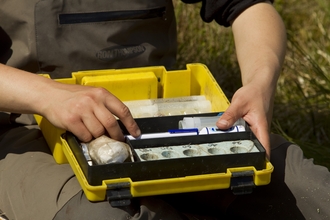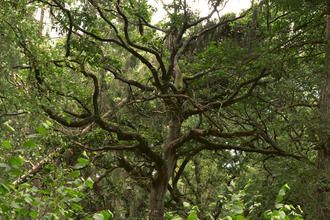Save Great Wood
Thank you!
The purchase of Great Wood has now been completed, thanks to funding from Biffa Award and generous donations from our supporters. Surveys have been completed to inform butterfly conservation works, and for protected species including Great Crested Newts and bats. These surveys discovered more wildlife on site than we expected, such as the brown hairstreak butterfly, so more funding is needed to enhance the wood for the benefit of those species.
We took our two Swindon Adult Wellbeing Groups to Great Wood in May, where they were led on an amazing nature walk and identified many types of wild flowers such as orchids and ragged robin, as well as a fleeting glimpse of a small pearl-bordered fritillary butterfly.
Restoration work began in the summer last year, but more funds are needed in order to complete the work before the end of the forestry season. Visits to the site remain restricted due to the nature of these works, but volunteers are welcome to join us by registering here.
Can you help us to save and restore Great Wood?
We have a unique chance to make Great Wood a fantastic place for nature to thrive. Transforming Great Wood, 175 acres of ancient woodland near Grittenham in North Wiltshire, into a nature reserve, will protect one of the county’s few remaining large ancient woodlands.
Biffa Award has awarded us a very generous grant via the Landfill Communities Fund. Together with support from The Underwood Trust and other generous funders, this grant has enabled us to secure the vast majority of funding needed to restore the woodland to its former glory. However, we need another £120,000 to carry out all the work needed in the time we have to complete the project. With your help, we can reverse nature's decline and maintain and protect what remains of the woodland habitat.
Ancient woodlands are irreplaceable. Their complex ecosystems have developed over hundreds of years and cannot be recreated within our lifetimes.
The stunning array of flora, insects, birds and mammals supported by ancient woodlands include many rare and specialist species such as the wood white, pearl-bordered fritillary and purple emperor butterflies, and birds such as willow warbler. These woodlands also lock up an extraordinary amount of carbon, not only in the ancient trees, but in the undisturbed soils beneath the canopy.
Up to 70% of our ancient woods have been lost or damaged due to felling, the planting of non-native trees, and the spread of invasive species. Ancient woodlands now cover just 2.5% of the UK.
Great Wood was the last known stronghold of the wood white butterfly, now extinct in Wiltshire. Commercially managed for decades, this ancient woodland is in urgent need of restoration to its former glory to attract wildlife that has been lost from the area and prevent more species disappearing.
This is a unique opportunity for us to preserve what could be the largest collection of wild service trees in the country, as well as fantastic stands of oak. We will restore Great Wood to a fully functioning ancient woodland ecosystem, increasing biodiversity whilst ensuring it is more resilient to the impacts of climate change.
Donate to save and restore Great Wood
Donate by phone: 01380 829071
With this funding we will:
- Add a native mix of broadleaf trees to the woodland
- Create glades, widen woodland rides and coppice hazel to let light back into the woodland floor, allowing ground flora to spring back
- Remove invasive plant species
- Create the ideal habitat for woodland butterflies
- Restore an existing large pond and create a second
- Establish a programme of community engagement activities eg guided walks, forest school and eco-therapy
- Restore hedgerows
- Create a landscape-scale nature recovery network in North Wiltshire
Any funds raised surplus to those required to restore Great Wood will be used for the acquisition and/or maintenance of woodland reserves throughout Wiltshire and Swindon.
All ancient woodland figures quoted apply to designated ancient woodlands according to the current ancient woodland inventories (AWI) for England, Scotland, Wales and Northern Ireland where relevant.


